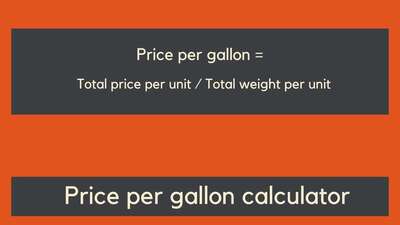Compound Interest Calculator

- Definition of Compound Interest
- Formula for Compound Interest
- Examples of Compound Interest
- Explanation of Compound Interest Calculator
- The History of Compound Interest
- The Difference Between Compound Interest and Exponential Growth
- The Snowball Effect
- The Rule of 72
- The Psychological Impact of Understanding Compound Interest
- Question and Answer FAQ
- Q: Is compound interest the same as simple interest?
- Q: Can compound interest work against me?
- Q: How often is interest compounded?
- Q: Are there any risks associated with compound interest?
- Conclusion
Compound interest is a powerful financial tool that can help you grow your wealth over time. Whether you're saving for retirement, investing in the stock market, or simply trying to build a nest egg, understanding compound interest is essential to achieving your financial goals. In this article, we'll explain what compound interest is, how it works, and how you can use a compound interest calculator to help you plan your financial future.
Definition of Compound Interest
Compound interest is interest that is calculated not only on the initial principal but also on any accumulated interest from previous periods. In other words, compound interest is interest on interest. This means that over time, the amount of interest you earn will grow exponentially, as the interest you earn is reinvested and begins to earn interest of its own. This is why compound interest is often referred to as the "miracle of compounding."
Formula for Compound Interest
The formula for calculating compound interest is:
A = P (1 + r/n)^(nt)
Where:
- A is the total amount of money you will have after a certain number of years
- P is the principal amount you start with
- r is the annual interest rate
- n is the number of times the interest is compounded per year
- t is the number of years you will be saving or investing
Examples of Compound Interest
Let's take a look at an example to see how compound interest works in practice. Say you invest $10,000 in a savings account that pays 5% interest annually, compounded monthly. After one year, your investment would have grown to:
A = $10,000 (1 + 0.05/12)^(12*1) = $10,512.68
After two years, your investment would have grown to:
A = $10,000 (1 + 0.05/12)^(12*2) = $11,039.03
And after ten years, your investment would have grown to:
A = $10,000 (1 + 0.05/12)^(12*10) = $16,470.10
As you can see, the power of compound interest really becomes apparent over longer periods of time. By reinvesting your interest earnings, your investment can grow significantly more than it would with simple interest.
Explanation of Compound Interest Calculator
A compound interest calculator is a tool that allows you to calculate how much money you can expect to earn on an investment over a certain period of time. To use a compound interest calculator, you simply enter the principal amount, the annual interest rate, the number of times the interest is compounded per year, and the number of years you will be investing or saving. The calculator then uses the compound interest formula to calculate the total amount of money you will have after the specified number of years.
Compound interest calculators can be found online for free, and are often provided by financial institutions, investment companies, or personal finance websites. Some calculators may also allow you to adjust for inflation, taxes, or other factors that may impact the growth of your investment over time.
Using a compound interest calculator can be a useful tool for planning your financial future. By inputting different variables, you can see how different interest rates, compounding frequencies, and investment periods can affect the growth of your savings or investments. This can help you make more informed decisions about how much to save or invest, and for how long, to reach your financial goals.
The History of Compound Interest
The concept of compound interest has deep historical roots. Long before our modern financial systems, ancient civilizations such as the Babylonians, Greeks, and Romans already grasped the principle of reinvesting earned interest. Compound interest is more than just a mathematical formula—it's a philosophy that emphasizes the cyclical growth of money.
In these bygone eras, moneylenders and merchants were among the first to recognize the potential of reinvesting the interest they earned, allowing wealth to grow more substantially over time. This principle, while simple, played a pivotal role in the accumulation and growth of wealth for individuals and even kingdoms.
“Money makes money. And the money that money makes, makes money.” - Benjamin Franklin
Benjamin Franklin, one of the leading figures of early American history and a polymath with a keen interest in mathematics and finance, eloquently captured the essence of compound interest with this quote. His words underscore the powerful idea that capital doesn't just grow from the initial amount (or principal) but also from the interest that accumulates over time.
Throughout history, understanding the power of compound interest has been a key to financial success and has shaped many investment strategies and fiscal policies. Today, it remains a fundamental concept in finance and investment, aiding countless individuals in achieving their long-term financial goals.
The Difference Between Compound Interest and Exponential Growth
At first glance, compound interest and exponential growth might appear to be interchangeable concepts, given their shared principle of growth over time. However, upon closer examination, key differences emerge that set them apart.
Exponential Growth: This is a universal mathematical concept that can be observed across various domains, from population studies to biology. Exponential growth occurs when a quantity increases at a consistent growth rate over time. Essentially, it refers to a situation where the rate of growth is proportional to the current value, leading to a continuously growing base. For instance, if a bacteria colony doubles in size every hour, it showcases exponential growth.
Compound Interest: This concept, on the other hand, is primarily rooted in the realm of finance. Compound interest refers to the process where interest is calculated on the initial principal, which also includes all the accumulated interest from previous periods. As time progresses, you earn interest on both the money you initially invested (the principal) and the interest you've previously earned. This is why it's often said that "interest earns interest" in the financial world.
It's crucial to note that while compound interest can be modelled using exponential functions, the reverse isn't necessarily true. Not all instances of exponential growth are related to financial interest or capital. Thus, while there's overlap in the mathematical representations, the contexts in which they're applied are distinct.
The Snowball Effect
The concept of compound interest can be visualized metaphorically as a snowball rolling down a hill. Imagine the following scenario:
- Starting Small: When you first make an investment or deposit money into an interest-bearing account, it's like the initial formation of a tiny snowball at the top of a hill. Initially, the growth might seem negligible or slow, just like a small snowball seems hardly threatening.
- Gathering Momentum: As you let the snowball (your investment) roll down the hill (over time), it starts picking up more snow. In the world of finance, this is the interest being added to your principal, which then earns interest of its own in the next period.
- Exponential Growth: The further the snowball travels, the more snow it accumulates. This mirrors the effect of compound interest where the interest earned is reinvested, leading to progressively larger interest amounts being added in each subsequent period.
- The Power of Time: The size of the snowball when it reaches the bottom of the hill is drastically different from its size at the beginning. Similarly, even a modest sum, when given sufficient time to compound, can grow to an impressive amount. It's not just about the rate of interest but also the duration for which the money is invested or saved.
In essence, the snowball effect beautifully illustrates the principle of compound interest. Just as a snowball requires time and distance to grow in size, investments need time to realize the full potential of compounding. It's a testament to the adage that time in the market can often be more valuable than timing the market.
The Rule of 72
The Rule of 72 is a simple yet profound mathematical principle used in the world of finance to understand the effects of compound interest. By employing this rule, investors can get a quick estimate of how long it will take for their investments to double, given a fixed annual interest rate.
The formula is straightforward: Years to Double = 72 ÷ Interest Rate.
For instance, let's consider an example:
If you have an investment with an annual interest rate of 6%, by using the Rule of 72, you can determine that it would take roughly 12 years for your investment to double. This is calculated as 72 ÷ 6 = 12.
It's essential to note that the Rule of 72 provides an approximation. However, it serves as a valuable tool for investors to gauge the potential of their investments quickly and make informed decisions.
The Psychological Impact of Understanding Compound Interest
Grasping the essence of compound interest can drastically shift one's approach to personal finance and investment. Its understanding can serve as a motivational catalyst, especially for the younger generation, prompting them to begin their investment journeys earlier rather than later.
- Value of Starting Early: Even if the initial amounts are modest, the early start in investment or savings can compound to create significant growth over extended periods.
- Importance of Patience: Compound interest teaches the importance of patience in the financial realm. Rather than seeking instant gratification, individuals learn the benefits of letting their money work for them over time.
- Long-term Planning: Understanding compounding underscores the significance of long-term financial planning and setting clear objectives.
- Disciplined Saving: Witnessing the potential growth of compounded returns can encourage individuals to save diligently and consistently.
In conclusion, the psychological impact of understanding compound interest is profound. It not only promotes better financial habits but also cultivates a mindset focused on long-term growth and financial stability.
Question and Answer FAQ
Q: Is compound interest the same as simple interest?
No, compound interest is not the same as simple interest. Simple interest is interest that is calculated only on the initial principal amount, and does not accumulate over time. Compound interest, on the other hand, is interest that is calculated on both the initial principal amount and any accumulated interest from previous periods.
Q: Can compound interest work against me?
Yes, compound interest can work against you if you are paying interest on a loan or credit card balance. In this case, the interest you owe will also be compounded, which can cause your debt to grow exponentially over time if you are unable to pay it off quickly.
Q: How often is interest compounded?
The frequency of compounding depends on the specific savings or investment account you have. Some accounts may compound interest daily, monthly, quarterly, or annually. The more frequently interest is compounded, the faster your investment will grow.
Q: Are there any risks associated with compound interest?
There are some risks associated with investing in accounts that offer compound interest. One risk is that the interest rate may change over time, which can affect the growth of your investment. Additionally, some investments may carry higher risks than others, which can result in losses rather than gains. It's important to do your research and understand the risks associated with any investment before committing your money.
Conclusion
Compound interest is a powerful financial tool that can help you grow your savings or investments over time. By understanding how compound interest works, and using a compound interest calculator to plan your financial future, you can make more informed decisions about how to invest your money to achieve your financial goals. While there are risks associated with investing, compound interest can provide significant benefits when used wisely.





![Car Loan Calculator: Definition, Formula, Examples, and FAQs [2023 Guide]](/images/page/400/car-loan-calculator-13.jpg)








































































